Black Lion Audio PBR TT LIT Bruksanvisning
Black Lion Audio
ej kategoriserat
PBR TT LIT
Läs gratis den bruksanvisning för Black Lion Audio PBR TT LIT (2 sidor) i kategorin ej kategoriserat. Guiden har ansetts hjälpsam av 16 personer och har ett genomsnittsbetyg på 3.6 stjärnor baserat på 8.5 recensioner. Har du en fråga om Black Lion Audio PBR TT LIT eller vill du ställa frågor till andra användare av produkten? Ställ en fråga
Sida 1/2

Owner’s
Manual
PBR TT LIT
Patchbay
CUSTOMIZING YOUR LED DISPLAY
The PBR TT LIT LED display can be edited several different ways. The
PBR TT LIT’s LED display supports up to six characters per connection;
three per line.
CONNECTING A KEYBOARD TO THE USB PORT
1. Connect your keyboard to the PBR TT LIT using a USB cable or wire-
less/Bluetooth receiver. Once connected, the PBR TT LIT’s rst cell
will begin blinking to indicate the patchbay is in edit mode.
2. The arrow keys can be used to quickly select the desired cell for ed-
iting. The currently selected cell will continuously blink. Press enter
to begin editing the currently selected cell.
3. Type the text you would like to see using the keyboard. Press TAB or
ENTER to cycle to the next cell.
4. When nished, unplug the keyboard and press Update.
USING PATCHCAD BLA EDITION SOFTWARE
1. Register your hardware at register.blacklionaudio.com/login
2. You’ll receive a download link and activation code for PatchCad.
3. Download, install, and run PatchCad.
4. Enter your license key to activate.
5. Choose File >> New Project. Enter a name for your project and any
other details you like.
6. Choose View >> Templates to display a list of templates on the right.
7. Double-click the PBR TT LIT patchbay to choose it.
8. Click any cell to activate text entry.
9. Enter the desired text. You get up to three characters per cell.
10. When done, choose Patchbays >> Export Black Lion Audio PBR
Labels CSV
11. Save the le as PBR_TT.csv.
12. Save or copy this le to a USB drive.
13. Safely eject the USB drive and remove it from your computer.
14. Place the USB drive in the USB port of your patchbay.
15. The patchbay text will import automatically. If it doesn’t, the LED
display will read “Error” to indicate an error; Check your lename
and try again.
NOTES
USB PORT
The PBR TT LIT’s USB port does not support connection directly to a
computer.
PHANTOM POWER
We advise against running phantom power through your patchbay, as
this makes it possible to send phantom power to a device not designed
to handle it; expensive damage could result!
If you decide to route phantom power through your patchbay, always
ensure that your phantom power source is turned off before changing
any connections.
Failure to do so can cause unbalanced shorts when a plug is inserted or
removed, damaging input transistors of hardware processors, or dam-
aging the transformer or ribbon of a ribbon mic.
DB25 WIRING CONVENTION
The PBR TT LIT Patchbay uses the Tascam DB25 wiring convention.
Some audio equipment uses the Yamaha convention. Check the docu-
mentation for your other DB25 hardware to ensure compatibility.
AUDIO CABLE CHOICE
We’ve tested the following brands of audio cables for a secure, reli-
able connection: Hosa, Mogami, Rean, Neutrik, and RedCo. We advise
against using cables from other manufacturers.
IMPORTANT SAFETY INSTRUCTIONS
1. Read these instructions.
2. Keep these instructions
3. Heed all warnings.
4. Follow all instructions.
5. Do not use this apparatus near water.
6. Clean only with dry cloth.
7. Install in accordance with the manufacturer’s instructions.
8. Do not install near any heat sources such as radiators, heat regis-
ters, stoves, or other apparatus that produce heat.
9. Use only attachments/accessories specied by the manufacturer
10. Use only with a cart, stand, tripod, bracket or table specied by the
manufacturer, or sold with the apparatus. When a cart is used, use
caution when moving the cart/apparatus combination to avoid in-
jury from tip-over.
11. Refer all servicing to qualied service personnel. Servicing is re-
quired when the apparatus has been damaged in any way, such as
power supply cord or plug is damaged, liquid has been spilled or
objects have fallen into the apparatus, the apparatus has been ex-
posed to rain or moisture, does not operate normally, or has been
dropped.
12. This apparatus shall not be exposed to dripping or splashing, and
no object lled with liquids, such as vases, shall be placed on the
apparatus.
13. Any changes or modications not expressly approved in this manu-
al could void your authority to operate this apparatus.
Do not attempt to service this unit yourself, as it will void your warran-
ty. Please check your unit carefully upon receipt and return to place
of purchase immediately if there are any problems with the product.
After that, the standard Black Lion Audio 3 YEAR warranty will apply
to defects in materials and workmanship.
U.S.A.
Should your Black Lion Audio product require service,
please contact us on our customer service site:
https://www.blacklionaudio.com/contact. You must obtain an RA #
(Return Authorization number) from us before shipping a unit back to
us. This RA # must be clearly written on the outside of the box.
Please safely pack the units…It is best to use the original packing
materials. Black Lion Audio cannot be responsible for any damag-
es incurred in shipping to us due to poor packaging. PLEASE PACK
CAREFULLY and FULLY INSURE THE SHIPMENT.
INTERNATIONAL
For service or warranty assistance, please contact the Black Lion Au-
dio distributor in your country through the dealer from whom you pur-
chased this product.
LIMITED 3 YEAR WARRANTY
Black Lion Audio’s PBR TT LIT Patchbays are warranted by Black Lion
Audio to be free from defects in materials and workmanship for the pe-
riod of THREE (3) YEARS to the original purchaser. In the event of such
defects, the product will be repaired without charge or, at our option,
replaced with a new one if delivered to Black Lion Audio prepaid, to-
gether with a copy of the sales slip or other proof of purchase date. The
warranty excludes problems due to normal wear, abuse, shipping dam-
age or failure to use the product in accordance with the specications.
All parts and labor are covered under this Limited Warranty.
However, if it is determined by Black Lion Audio that the device
was damaged or made defective through abuse, we reserve
the right to charge the customer for the cost of the repair.
Black Lion Audio shall not be liable for damages based upon inconve-
nience, loss of use of the product, loss of time, interrupted operation
or commercial loss or any other damages, whether incidental, con-
sequential or otherwise. This warranty gives you specic legal rights,
and you may have other rights, which will vary from state to state.
This warranty is not transferable.
NOTICE
This manual provides general information, preparation for use, installation and oper-
ating instructions for the Black Lion Audio PBR TT LIT Patchbay.
The information contained in this manual is subject to change without notice. Black
Lion Audio makes no warranties of any kind with regard to this manual, including, but
not limited to, the implied warranties of merchantability and tness for a particular
purpose. Black Lion Audio shall not be liable for errors contained herein or direct, indi-
rect, special, incidental, or consequential damages in connection with the furnishing,
performance, or use of this material.
©2024 Black Lion Audio. The Black Lion Audio ‘Lion Face’ logo, BLA, are trademarks
or registered trademarks of Black Lion Audio.
This manual and any associated intellectual property are subject to
copyright protection. No part of this document may be reproduced in
any form without explicit written consent from Black Lion Audio.
RAD Distribution
180 Carpenter Ave.
Middletown, New York, 10940
USA
Revised 12-23-24
Produktspecifikationer
| Varumärke: | Black Lion Audio |
| Kategori: | ej kategoriserat |
| Modell: | PBR TT LIT |
Behöver du hjälp?
Om du behöver hjälp med Black Lion Audio PBR TT LIT ställ en fråga nedan och andra användare kommer att svara dig
ej kategoriserat Black Lion Audio Manualer
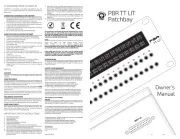
19 Oktober 2025
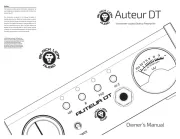
6 Oktober 2025
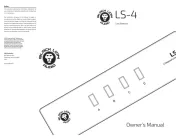
4 Oktober 2025
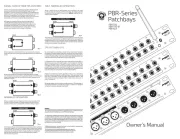
4 Oktober 2025
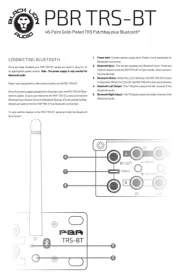
3 Oktober 2025
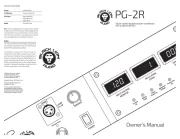
3 Oktober 2025
ej kategoriserat Manualer
- Dexibell
- Hotpoint
- Hudson Valley
- Sauermann
- White Lightning
- Intenso
- Eura
- Kogan
- Life On Products
- DMT
- Helix
- Irradio BelAir
- Dateq
- Vitamix
- La Pavoni
Nyaste ej kategoriserat Manualer

23 Oktober 2025
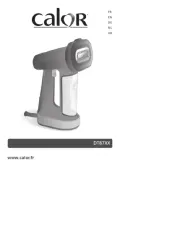
23 Oktober 2025
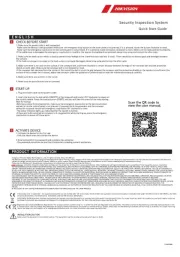
23 Oktober 2025
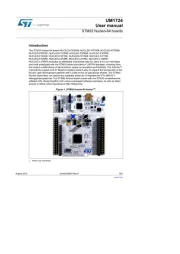
23 Oktober 2025
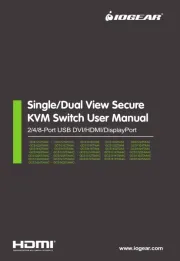
23 Oktober 2025
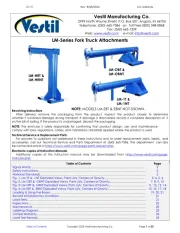
23 Oktober 2025
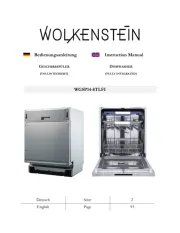
23 Oktober 2025
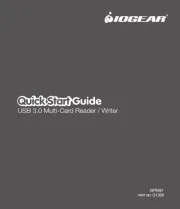
23 Oktober 2025
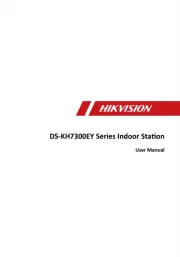
23 Oktober 2025
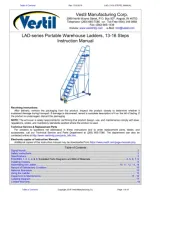
23 Oktober 2025